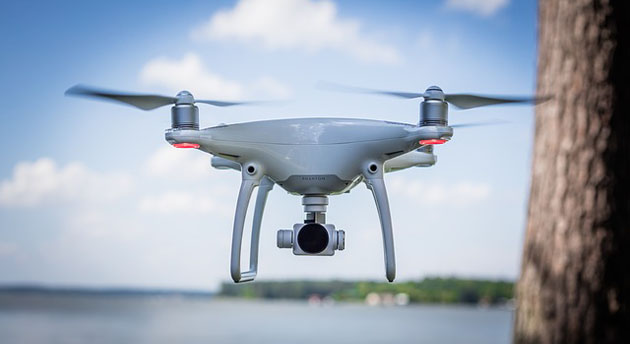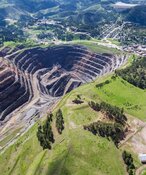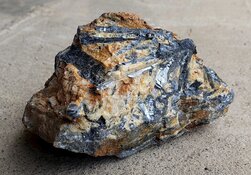As a general rule, the most successful man in life is the man who has the best information
Economist Joseph Schumpeter introduced innovation economics in his 1942 book Capitalism, Socialism and Democracy. Schumpeter said that industries must incessantly revolutionize the economic structure from within by innovating with better or more effective processes and products.
We can define, or limit the term "innovation" to a product, or process that's original, that's more effective, and as a new application better meets new requirements or existing market needs.
Disruptive Innovation
A disruptive innovation displaces an existing market, industry, or technology and produces something new, more efficient and worthwhile.
Disruptive innovations do this in three ways:
- By harnessing new technologies
- By developing new business models
- By exploiting old technologies in new ways
Disruptive innovations have the potential to truly reshape the world in which we live and work.
Today we are witnessing a disruptive innovation as drone technologies upend business models and reshape industry landscapes ranging from agriculture to infrastructure to mining. In the very near future, in all areas of the economy we will begin to see the impact of drones.
What are the key commercial applications of drones?
- Infrastructure
- Transport
- Insurance
- Media and Entertainment
- Telecommunication
- Agriculture
- Security
- Mining
Let's take a look at how disruptive, and innovative, drone technology will be to our agriculture industry—PwC predicts drone powered solutions in the ag industry to be a US$32.4 billion per annum market.
The United Nations (UN) expects 9.7 billion people to call Earth home by 2050. It is estimated current food production will have to increase by 70% from what it is today to feed everyone. Scientists also estimate there will be much higher demand for water (UN says 50% more) and a lot less arable land available. We need a new farm the size of South Africa, unfortunately we’re losing the equivalent total arable area of France every 18 months.
Farming, when broken down to its simplest basics is an input-output problem. If as farmers we could reduce our inputs—seed, water, fertilizers, herbicides and pesticides—and still maintain the same output, we will be overcoming a central challenge to farm economics and feeding our increasing population.
Achieving a 70% increase in food production would require:
- Highly technical analysis of agricultural data.
- Development of technologies capable of collecting and analyzing that data.
- Using the information to speed and enhance production while maintaining quality standards.
Drones, loaded with high resolution point and shoot cameras, thermal imagery, geographic information systems, flight pattern software and GPS are going to help drive an era of "data-driven" agriculture.
Drone Benefits
Airborne cameras can take multispectral images, capturing data from the infrared spectrum as well as the visual. These images can be combined to create a view of the crop that highlights the differences between healthy and distressed plants. Most often you cannot see the differences with the naked eye until yields will have been reduced, or much more expensive to fix.
It's impossible to be continuously monitoring your fields on a smaller farm, imagine trying to monitor fields on a 20,000 acre farm? Seeing a crop from the air reveals patterns that expose, to your eye in the sky, everything from irrigation problems. to soil variations, to pest and fungal infestations that aren’t apparent to the farmer walking his fields.
By creating a time series animation from multiple fly-overs, the imagery can show changes in the crop, revealing trouble spots or opportunities for better crop management.
Drones are now being equipped with herbicide/insecticide sprayers. Spraying is done with pinpoint accuracy utilizing ultrasonic echoing devices and lasers. The result is a massive reduction in overall chemical sprayed which means a lot less chemical reaching precious groundwater. This method is also roughly 4-5 times faster than a tractor pulling a boom or nozzle sprayer making it another drone usage value proposition for farmers.
By launching specialized seed and nutrient filled pods a new drone-based planting system has the potential to decrease planting costs by close to 85%.
Drones are being fitted with 3-D mapping equipment capable of going out and bringing back soil and field analysis data to streamline planning and planting patterns and to help optimize field irrigation and soil nitrogen levels throughout the crop cycle.
Cattle are being fitted with ear tags that will be read by drones. Round ups are made easier, animals can be located long before cowboys hit the saddle. Pregnant animals or stressed animals can be quickly identified, potentially saving lives and improving economics. Predator control will be more efficient.
Drone docking/charging stations can be installed in the field. Drones will be assigned to specific areas and when batteries get low they return to their docking station to recharge and fly again.
Drones can also be fitted with remote sensing equipment, such as hyperspectral, multispectral, or thermal sensing systems. These specialized systems allow identification of the driest sections of field so water resources can be allocated more economically. More water for the dry areas and less for the wetter ones saves on water and pumping costs.
Conclusion
Farming drones operate like flying doctors. By being able to collect enough detailed information technicians and farmers can work together to develop diagnostic images and write a prescription to fix a field or farm's health.
By gathering copious amounts of detailed data drones enable farmers to make different prescription maps depending on what the farmer wants to do or has to do, in the field. They can optimize the use of inputs, react quickly to threats and save time validating treatment. All of this adds up to maximizing output/yield and of course economics.
"Industries must incessantly revolutionize the economic structure from within by innovating with better or more effective processes and products." Economist Joseph Schumpeter
Drones are going to change the economics of farming. They are also going to greatly help in enabling the feeding of the 2.2 billion more people coming to the dinner table over the next 30 some years.
Richard (Rick) Mills, AheadoftheHerd.com. Richard lives on a 160 acre farm in northern British Columbia. Richard's articles have been published on over 400 websites, including: WallStreetJournal, USAToday, NationalPost, Lewrockwell, MontrealGazette, VancouverSun, CBSnews, HuffingtonPost, Beforeitsnews, Londonthenews, Wealthwire, CalgaryHerald, Forbes, Dallasnews, SGTreport, Vantagewire, Indiatimes, Ninemsn, Ibtimes, Businessweek, HongKongHerald, Moneytalks, SeekingAlpha, BusinessInsider, Investing.com, MSN.com and the Association of Mining Analysts.
Sign up for Ahead Of The Herd's free highly acclaimed newsletter.
Legal Notice / Disclaimer
This document is not and should not be construed as an offer to sell or the solicitation of an offer to purchase or subscribe for any investment.
Want to read more Streetwise articles like this? Sign up for our free e-newsletter, and you'll learn when new articles have been published. To see a list of recent articles and interviews with industry analysts and commentators, visit our Streetwise Interviews page.
Disclosures:
1) Statements and opinions expressed are the opinions of Rick Mills and not of Streetwise Reports or its officers. Rick Mills is wholly responsible for the validity of the statements. Streetwise Reports was not involved in the content preparation. Rick Mills was not paid by Streetwise Reports LLC for this article. Streetwise Reports was not paid by the author to publish or syndicate this article.
2) This article does not constitute investment advice. Each reader is encouraged to consult with his or her individual financial professional and any action a reader takes as a result of information presented here is his or her own responsibility. By opening this page, each reader accepts and agrees to Streetwise Reports' terms of use and full legal disclaimer. This article is not a solicitation for investment. Streetwise Reports does not render general or specific investment advice and the information on Streetwise Reports should not be considered a recommendation to buy or sell any security. Streetwise Reports does not endorse or recommend the business, products, services or securities of any company mentioned on Streetwise Reports.




































